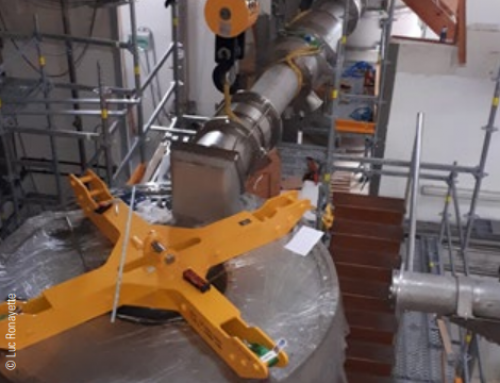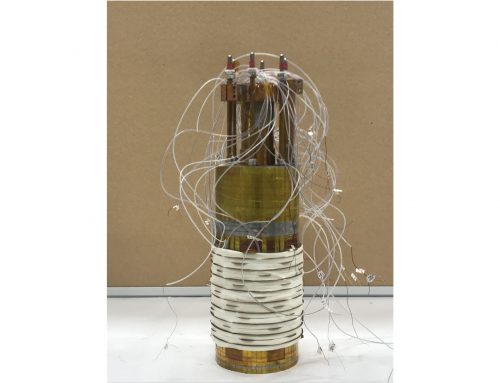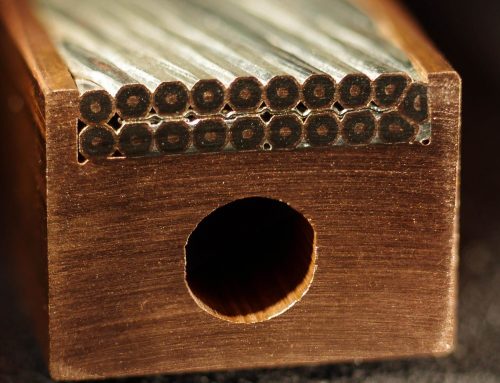Gabriel Seyfarth, LNCMI Grenoble
A new Faraday-balance magnetometer for low temperatures and high magnetic fields has been developed at LNCMI Grenoble. It has been designed to probe the sample magnetization. The determination of absolute values is possible via separate calibration measurements. The working principle is based on the fact that magnetic moments are subject to a force in the presence of a magnetic field gradient (created here by placing a ferromagnet close to the sample). Experimentally, the displacement induced by this force is detected via a capacitance change: the sample is placed on a suspended CuBe platform which constitutes one of the electrodes of the capacitor (Figure). The set-up is well adapted for measuring field-dependent magnetization curves of small single crystals of typical size of 1 mm x 1 mm x 500 µm. So far, the magnetometer has been used down to a temperature of 1.3 K and up to magnetic fields of 36 T (an extension to dilution-refrigerator temperatures is planned). The sensitivity can be adapted to the magnetic moment of the samples and reaches at the moment a minimum value of about 10-7 emu. Well-resolved quantum oscillations (de Haas-van Alphen effect) could be observed in several systems.

Figure: (Left panel) Top view of the magnetometer with crystals in the center of more or less rigid (sensitive) CuBe sample platforms (shown separately in the upper row). (Right Panel) Raw (as measured) data of the capacitance (proportional to the sample magnetization). The overall amplitude at high fields corresponds to roughly 10-4 emu. Superimposed small quantum oscillations can easily be resolved.







Leave A Comment
You must be logged in to post a comment.